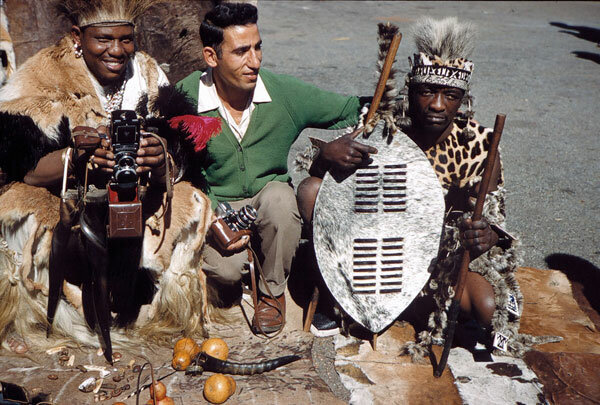Objects from primitive tribes to be added to Omidvar Brothers’ Museum

TEHRAN – Retired Iranian globetrotter Issa Omidvar, whose brother Abdollah passed away earlier this month, has said more objects they collected from primitive tribes in the 1950s will be added to their museum located in northern Tehran.
“Many objects from the primitive tribes were left with my late brother (Abdollah), after his death, and they are supposed to be sent from Chile to Iran to be added to the Omidvar Brothers’ Museum in the historical cultural complex of Sa'dabad,” IRNA quoted Issa Omidvar as saying on Monday.
During their 10-year journey around the world on a motorbike, they deliberately passed through bizarre places to create amazing visual films that are now a milestone in film history, a documentary record of a vanished world: peoples, cultures, and even entire countries that no longer exist.
Heading east, Omidvar brothers first passed through Pakistan, India, south-east Asia and Australia, eventually crossing the Pacific and heading up through Alaska and Canada into the Arctic. A vast sweep all across and down the Americas ended with a trip to Antarctica then, after a brief trip home, a new round of exploration in a 2CV, which they drove through Africa, somehow managing to get the vehicle through the Congo and the formidable barrier of the Ituri forest.
“Unlike many adventurers who started from Paris, we started our journey from the Orient. From Afghanistan, Pakistan and India, we went to Tibet, which was very difficult at that time,” he said, addressing a memorial service held at Sa'dabad Cultural-Historical Complex.
“We visited all the countries of East Asia and went to Australia by ship from Jakarta, where we studied about the Australian tribespeople and even lived with them for about eight months.”
“From Australia, we went to the American continent and from Canada, we reached the North Pole. We lived with Eskimos for about seven months. In South America, we stopped in Colombia for about a month so we could travel to the Amazon [rainforest], where we lived with primitive tribes for about six months, who were very dangerous…. we proceeded toward the South Pole,” Issa Omidvar added.
“After about seven years, we went from South America by ship to western France, and then we went to Paris with our motorcycles. There, we went to the Citroen company to get a car so that we could take ourselves to Africa. Of course, we returned to Iran with that car and stayed in Iran for three months, and after that, we started our plan to travel to Africa. For this purpose, we went to Kuwait and Saudi Arabia.”
As mentioned by The Guardian, the films they made along the way are full of the wonder and excitement of exploration. They also bring an interesting counterpoint to a visual medium that was, at the time, dominated by America and Europe. While the rest of the world was racing to modernity and feeling smugly superior to so-called primitive peoples, Abdollah and Issa Omidvar had an easy affinity and respect for those they met, something that gave them unique access to sights and sounds that were soon to be lost. What we also see is a world in a far better condition than might be imagined: forests seem endless, remote people seem happier and more secure in their lives; it is a world before globalization, and a place cleaner and far less hectic.
When their journeys ended, Abdollah settled in Chile, founding a successful film company and cinema, while Issa returned to Iran as something of a celebrity. There in Tehran, he built a museum to house all the artifacts that he and his brother had collected. It's a place very much worth a visit.
Throwing their film-making kit on their bikes and with just $90 each to spend, they set out to see the most remote people they could find. En route, they created a visual record that is now a milestone in film history, a documentary record of a vanished world: peoples, cultures, and even entire countries that no longer exist.
Travel fans may visit their pictures, personal belongings, and other associated objects at the Omidvar Brothers Museum inside the Sa’dabad Cultural-Historical Complex, northern Tehran.
AFM
Leave a Comment